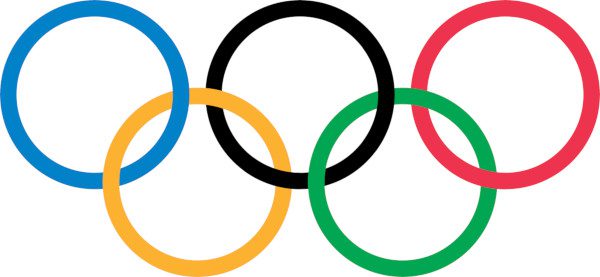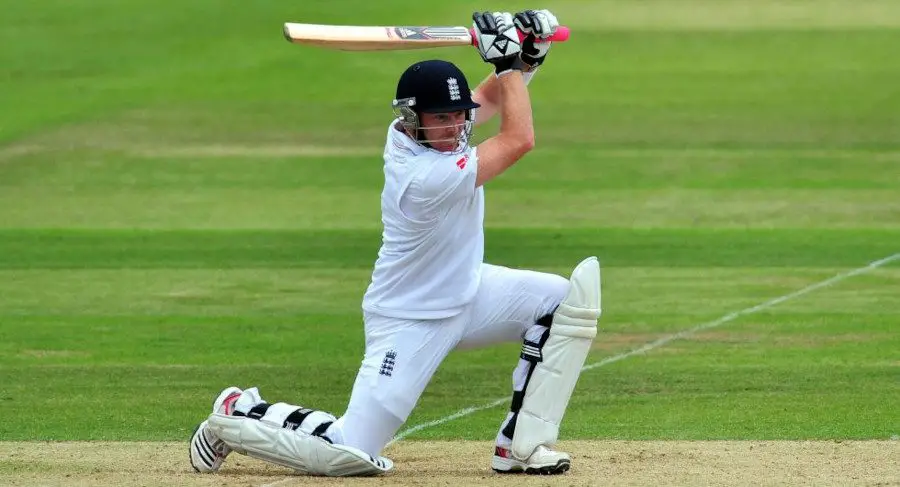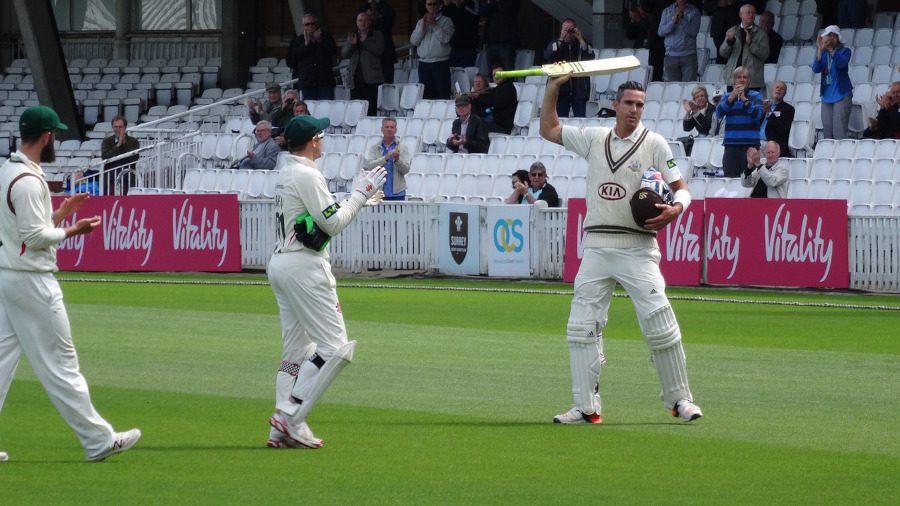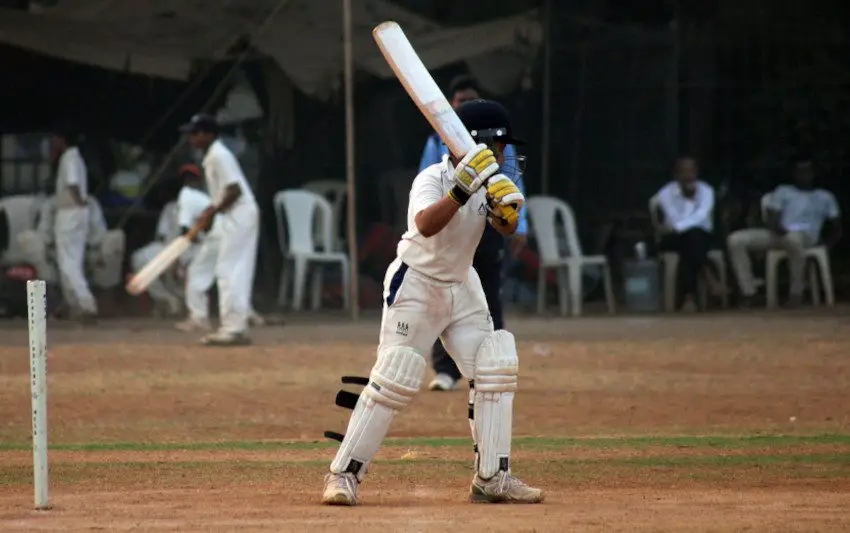Table of Contents
Cricket is a global sport, now more than ever. This british sport is now played in more parts of the world than ever before and some might find it odd to ommit a popular sport like cricket from the Olympics.
But was cricket ever included in the Olympics? And why is it missing now? Let’s find out.
Is Cricket an Olympic Sport?
Cricket is not currently included in the Summer Olympics and this has been the case since 1900. Only one match has ever been played and this took place at those 1900 Games in Paris.
Since then, the sport has been overlooked but there is speculation that this situation may change in the future. The game is now played in more parts of the world than ever before and there has been talk of future inclusions but, as yet, there are no concrete plans in place.
The Olympic History of Cricket
The solitary game was played between Great Britain and France with the British team winning the gold medal. Originally, Belgium and the Netherlands were also set to compete but both nations withdrew.
All that was left were those two representative sides. The Great Britain team was largely made up of players from the Devon and Somerset Wanderers Club who just happened to be touring France at that time.
As for the French team, this mostly comprised British ex-pats who had settled in Paris. It was a historic moment but the teams were hardly representative of their two countries.
A direct comparison would be between the 1900 game and club cricket that we see today. The standards would have been similar and, although there was plenty of entertainment for spectators and those involved, the quality may not have been the best endorsement for cricket as a permanent Olympic sport.
Only two players of the England side had even taken part in first class cricket so it remains as something of a historical footnote.
There was something of an element of farce about that 1900 game and it’s highly likely that the participants were not even aware that it carried Olympic status. The match was played as part of the 1900 Exposition Universelle which was akin to a World Fair.
It was generally regarded as an exhibition by those who took part and by the puzzled spectators who were looking on. It wasn’t until 1912 that full Olympic status was actually granted to this game.

Attempts at Reintroducing Cricket
St. Louis 1904 Summer Olympics
There had been hopes that cricket would appear once again at the 1904 Games in St Louis. There had been lobbying on the subject but the International Olympic Committee remained unconvinced.
Baron Pierre de Coubertin, President of the Olympic Committee and the man credited with creating the modern Olympics, was even taken to Lord’s where he watched a match and was introduced to none other than W.G. Grace.
It was a thrilling encounter which eventually ended in a tie and there was hope that cricket would make the final cut. However, as much as de Coubertin enjoyed the game and, as an admirer of English sports, he was something of an ally, he was also realistic.
President of the International Olympic Comittee said that
There is no reason to expect many teams to enter for football or cricket.
London 1908 Summer Olympics
It was a blow to organisers in the UK but they decided to try again four years later. Originally, the 1908 Summer Olympics had been scheduled for Rome and several likely venues for cricket had been checked out. However, financial issues and the eruption of Mount Vesuvius in 1906 subsequently forced a switch to London.
With Lord’s and the Oval already in place, London may have seemed like an ideal venue but the realisation that not enough countries would participate continued to hamper plans.
The official report for the 1908 Olympics stated that no game would be sanctioned if it was not practised by several different nations. At this time, only England, Australia and South Africa were playing test matches so it was clear that cricket fell some way short of those IOC standards.
This issue has constantly held cricket back and that’s why there have been very few efforts to get it on the Olympic roster since those enquiries in 1908.

Why is Cricket Not in the Olympics?
1. Number of Cricket Playing Countries
For many years, recognised international cricket was limited to just a few nations. The fact that other countries either had no interest in the sport or were not able to participate at the highest level didn’t help the game’s cause in terms of Olympic inclusion.
The very first test match was played between England and Australia in 1877 and, by the 1960s, the list of countries included at test level had expanded to just seven. Australia and England had been joined at this point by South Africa, New Zealand, Pakistan, the West Indies and India.
At this stage, test cricket was the only form of international cricket in place. One Day Internationals didn’t arrive until 1971 while the first T20 international took place in 2005. With South Africa soon to be excluded from top level sport until 1992, the list of test playing nations dropped even further.
Six countries playing at the highest level wasn’t enough to see the game included as an Olympic sport and, to be fair, cricket boards didn’t have a great deal of interest in the games at this point.
Over time, the list of participating test nations has grown and the addition of two limited overs formats has helped to expand the international family. However, there is an anomaly in cricket that doesn’t happen in other popular sports: namely, a weak nation has no opportunity to play the strongest teams at the highest level of the game (test cricket). This rather goes against the ethos of the Olympics and is a clear reason as to why the sport hasn’t been included thus far.
2. Representative Countries vs Test Cricket Teams
One potential stumbling block in allowing cricket to join the Olympic family lies in the game’s current set up. Some of the representative sides that are members of the International Cricket Council would not transfer easily to the format of the Olympics.
For example, the West Indies are likely to be split into the 15 individual nations that make up the overall region – Barbados, Jamaica, Guyana and so on.
Similarly, while there is an England team competing in test cricket as a full member of the ICC, this would have to change at the Olympics. A British team would be required and we saw a precedent to this when the Olympics were held in London in 2012.
As the host nation, Great Britain were somewhat obliged to field a team in the men’s soccer section and the squad selected contained players from across the British Isles. A Great Britain cricket team may be a medal contender but it would largely be made up of English players and that’s not ideal for Wales, Scotland and Northern Ireland.
In contrast, by splitting the West Indies team, the nations that emerge as a result would be much weaker. This is one of the reasons why the Commonwealth Games is a more suitable host for cricket. Here, England, Wales, Scotland and Northern Ireland compete as separate nations as do the many countries that go to make up the West Indies.
National identity is one reason why cricket could struggle to adapt to the Olympics but it’s not the only remaining question.
3. Lack of Cricket Grounds
Another potential issue relates to the availability of stadia: Cricket isn’t exactly unique and it could potentially adapt to soccer or rugby grounds but this isn’t perfect. The playing area would, ideally, need to be oval shaped in order to accommodate the dimensions of the boundary.
With a soccer pitch, boundaries would be too short on one side due to the rectangular shape. This is one of the reasons why cricket could not be considered as a serious entrant to the summer’s games in Tokyo 2020 or Paris 2024.
There simply aren’t enough suitable venues in Japan or France right now but there could be some better news for 2028.
In order to ride on the crest of cricket’s new wave, the United States have plans to introduce Major League Cricket in 2023. Six teams from around the country are in the frame to kick off the inaugural tournament and it’s hoped that the competition will attract some of the best T20 players from around the world to be part of USA cricket.
MLC was pushed back from an initial launch date due to the lack of suitable stadia but this is an area that will be addressed by the time that the tournament eventually takes place.
That could be good news for the Olympic Games of 2028 where there is the potential for purpose built grounds to host cricket as its newest sport.
4. No Real Competition
Cricket keeps ticking those boxes but can it hope to attract any real interest if it does appear in future games? There are more than 100 members of the International Cricket Council but only around eight to ten of those are at a full-time professional level.
As we saw at the 2021 T20 World Cup, there is a big gulf in class between the best sides and those who are merely associate members.
Scotland may have beaten Bangladesh in the early group stages but this was the only result that came close to being classed as an ‘upset’.
Ultimately, the make up of the semi finals was highly predictable with England, Pakistan, New Zealand and Australia making it through to the last four. Scotland, Namibia, Ireland and the Netherlands were among those who departed without any tangible success.
Shocks are rare, even in the shortest international form of the game and this could make it dull viewing for those who are not from one of the more successful countries. Potentially, a T10 cricket tournament could level the playing field to an extent but it’s still likely that regular cricket-playing countries could come through.
While it’s not an IOC stipulation, fans want their Olympic sports to be competitive and cricket may struggle to meet those demands.
The key to cricket being included in future Olympic games lies in the new formats. T20 in particular is a form which levels the playing field to an extent and we have seen a number of shock results with lower ranked teams winning matches.
T20 also fits the Olympic blueprint for other reasons: Firstly, it is a compact version of the game with matches lasting around three hours. Contests can be decided within one day and the format would therefore fit neatly into a two-week tournament such as the Olympics.
Finally, and perhaps most importantly, twenty20 international cricket matches are far more inclusive than the other two main formats. At the start of 2021, no fewer than 73 countries had full international status including the likes of Malawi, Iran, Gibraltar, Greece, Luxembourg and Romania.
5. BCCI Reluctance and National Leagues
The T20 form of the game is a perfect fit for the objectives of the modern Olympics. Cricket authorities have been aware of that and they have pushed cricket’s cause for a while but there has been a stumbling block. The Board of Cricket Control in India (BCCI) has been a dissenting voice and they have some personal reasons for doing this.
The BCCI runs the Indian Premier League which is currently the primary competition for T20 cricket. It’s not an international event but the domestic franchises that take part can attract the biggest players in the world and that’s why it’s the main global tournament.
It’s said that the BCCI is reluctant to allow the Olympics to compete with the IPL, even if it is only on a four-yearly basis. Not only are the games a potentially once-in-a-lifetime target for athletes, the timing is crucial here. The Indian Premier League traditionally finishes at the end of May with the Olympics starting just a few weeks later. It’s conceivable that the top players might want to rest during the IPL to make sure they are at peak fitness for the Olympic Games.
One final hurdle standing in the way of cricket’s entry into the Olympics also rests with the Indian cricket boards. In the past, the game’s governing body in India has been reluctant to work with the drugs agency NADA. This is a stumbling block as far as the International Olympic Committee (IOC) are concerned and one that needed to be overcome.
One final issue in the present day is the fact that international cricket has such a crowded schedule. The IPL is joined by other T20 competitions around the world including the Big Bash, the Pakistan Super League, the T20 Blast and the Caribbean Super League.

Cricket in the 2028 Olympics?
There have been many factors standing in the way of cricket’s belated re-entry into the Olympic Games but there is genuine hope that the sport will be included in 2028. The event will be heading to Los Angeles and all parties believe that cricket could play a part in the competition.
Former England captain Mike Gatting is now the chairman of the MCC World Cricket Committee and he revealed that he had been in positive talks with the International Cricket Council (ICC). Gatting confirmed that all parties were working towards this common goal and that he was hopeful of cricket’s future inclusion as an Olympic sport.
Many of the hurdles that have been in place in the past have been addressed and the BCCI in India is also working to help the cause. India’s governing body is now working with the drugs agency NADA and this is a crucial point as far as the International Olympic Comittee are concerned.
The timing of the games and its position in a very busy calendar isn’t a problem according to Gatting. As he states, it’s just two weeks and not a month and this is a four-yearly event as opposed to an annual tournament. As long as the Olympic Games falls outside of other global competitions, namely the 50 Over World Cup and the T20i World Cup, there shouldn’t be too many issues.
Criteria and Prospects of Including Cricket in the Olympic Games
We’ve seen how cricket was unable to meet the requirements of the IOC in the early 20th century but what about the present day? There is much talk of the sport being included in the relatively near future but does cricket meet current Olympic criteria?
There’s certainly a far bigger take up now than there was over 100 years ago. While the test match scene has seen a modest increase to 12 participants, the T20 format is now played all over the world.
The ICC allows associate members to play official T20 cricket matches and that’s why we see contests between USA, Germany, Canada, Belgium, Oman and many others who are not ready to be granted test status.
Any future Olympic cricket is likely to involve the T20 format so that’s one box that has been ticked.
A fanbase of over one billion could also sway the IOC. It’s said that around 92 per cent of those supporters come from southeast Asia and the region can be highly influential. Cricket needs the big nations to be involved and an endorsement from China, Japan and others would certainly help its cause.
Cricket still faces some obstacles: With the 2028 games being held in the United States, baseball and softball are likely to be included. The Olympic Committee have a limit on what they can allow and there is an upper cap of 10,500 participants in each of the summer games.
As such, the sport may yet have to wait but there is no doubt that cricket has evolved to the point where major criteria have now been met.
Overall, it’s looking very positive and 2028 could be the point when we see cricket return to the Olympic Games for the first time in 128 years.
The Olympic Cricket Format?
One reason why cricket has landed on the IOC radar relates to the introduction of T20 cricket. It’s a short format, lasting just a few hours and there are far more countries playing this format at the highest international level.
Another encouraging sign is the return of cricket to the Commonwealth Games in Birmingham in 2022. The sport is back on the schedules after a gap of 20 years and eight women’s teams from around the Commonwealth will take part in the T20 format.
However, there are some who feel that a brand new form of the game could be the one to appear at the 2028 Olympics in Los Angeles. In England in 2021, The Hundred will make its debut with eight teams from across the UK competing for the inaugural title.
As the name suggests, the entire game consists of 100 balls and this shaves a little time from the T20 format which uses up 120 deliveries. The game complicates the laws slightly with 5 and 10 ball overs but the basis rules of cricket and how a team can score runs remains the same.
The key element is that shorter form. 20 deliveries would take around 30 minutes but that may be significant. With cricket playing nations concerned about adding more games to a busy international calendar, the Hundred might just provide the answer.
Conclusion
Anything beyond this point is pure speculation but there are good reasons to believe that cricket will finally appear as an Olympic sport in the not too distant future. The game has a need to open up to new territories and, in particular, it’s said to want to spread into the USA and China. Those nations have their own teams and cricket would be nothing new here. In fact, the West Indies have already played some of their international games in neighbouring Florida.
Cricket is already played in these countries but the magnitude of the Olympic Games is certain to attract a far bigger audience. In time, the game will develop in those regions and the sport can only benefit financially.
For now, the relevant governing bodies in cricket and the Olympics need to work together in order to make it happen. Cricket is now a global game and it is in a much better position to enjoy Olympic recognition.


